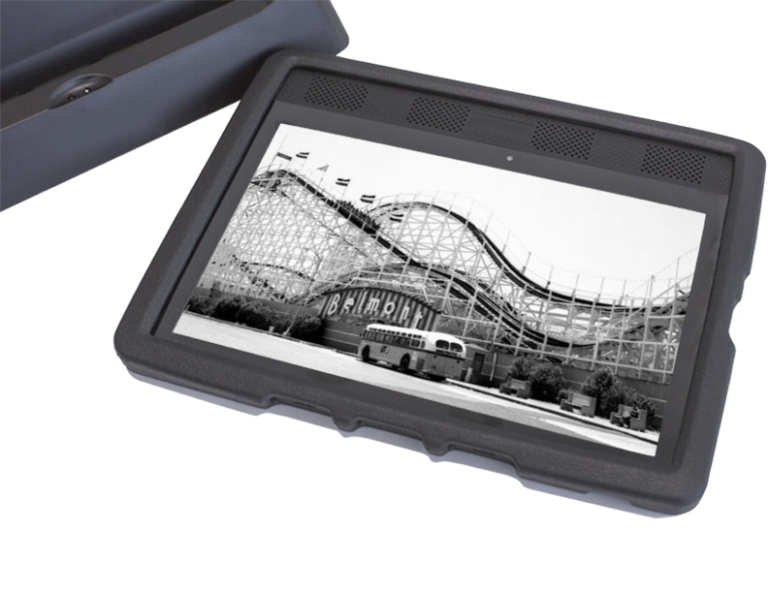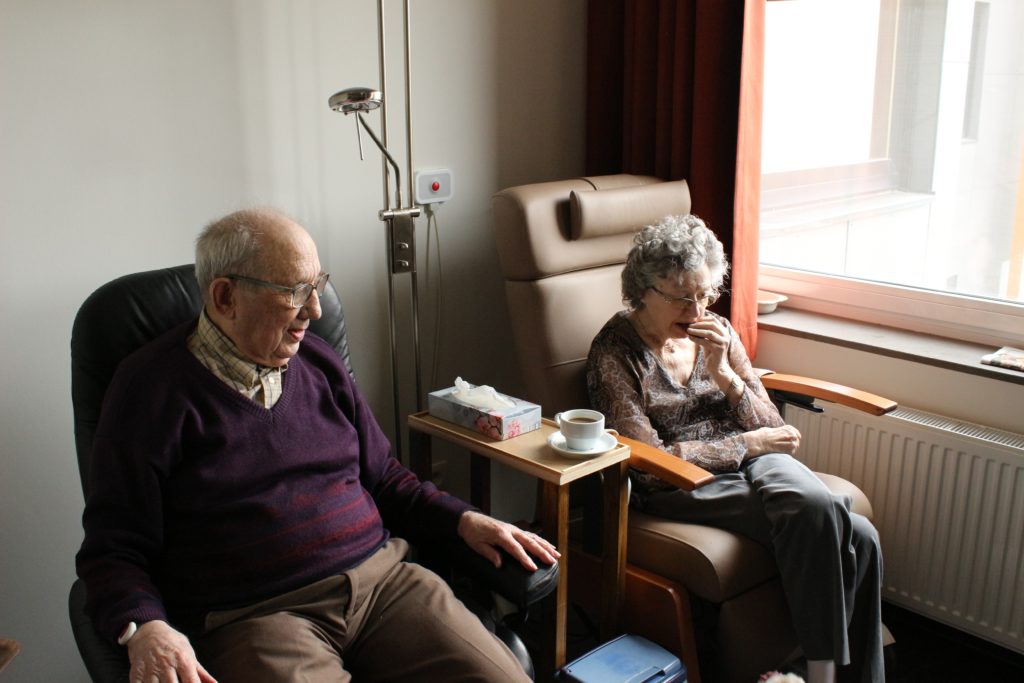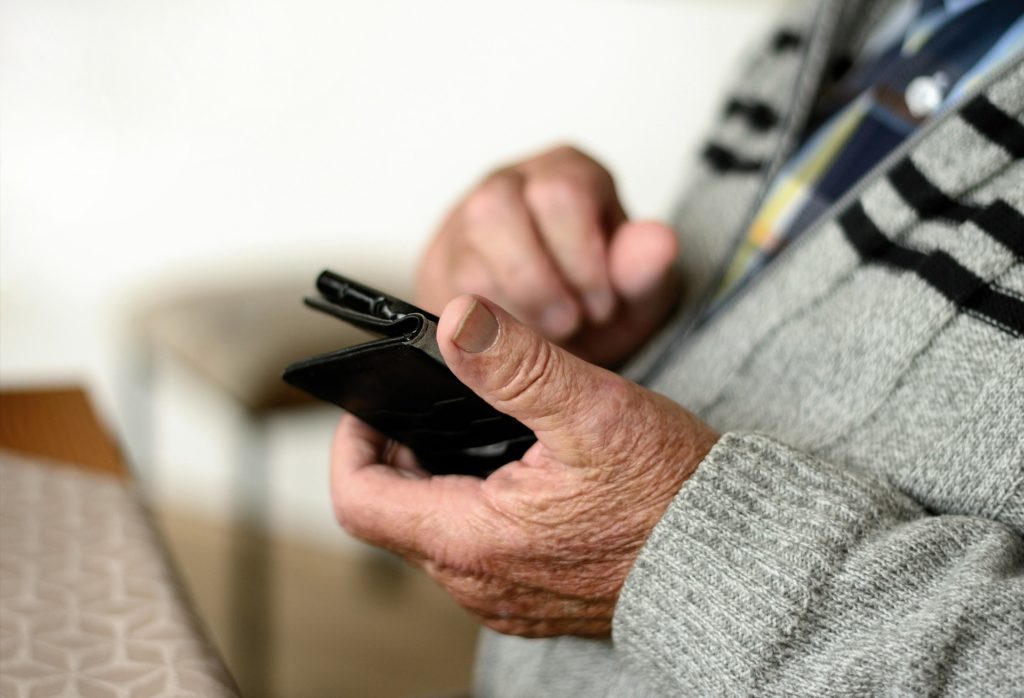Project Scope
Create easy to operate and sturdy hardware for a custom Android tablet and matching charging dock used by seniors suffering from Alzheimer’s or similar illnesses. The tablet is the centerpiece of a service that Hatch’s client created to provide digitally enhanced Reminiscence therapy to patients of Alzheimer and dementia.
Application Background
For decades pharmaceutical companies have invested in developing drugs to prevent or cure degenerative memory loss diseases, such as Alzheimer or dementia, which mainly affect senior citizens. After spending years and fortunes on this cause the disappointing results have diminished the hopes and budgets of pharmaceuticals to continue investing in drug based solutions.
According to the Mayo Clinic “Alzheimer’s drugs don’t work for everyone, and they can’t cure the disease or stop [the disease’s] progression. Over time, their effects wear off.” While pharmaceutical research hasn’t delivered great results an alternative treatment called Reminiscence therapy has given hope for delivering a calming effect to Alzheimer and dementia patients.
To describe what is Reminiscence therapy an article from the Cochrane Library explains “Reminiscence Therapy involves the discussion of past activities, events and experiences with another person or group of people, usually with the aid of tangible prompts such as photographs, household and other familiar items from the past, music and archive sound recordings”.
When memory loss occurs patients have a tendency to become easily agitated and sometimes physically violent. The idea behind Reminiscence therapy is that seeing images of familiar people and places provides a calming effect, making the patient more comfortable and less prone to aggressive behavior.
Aggressive patients pose a risk of physically damaging their surroundings and creating a difficult work environment for care takers. Calming these patients reduces hardship for caretakers and the chance of property damage by the patient.
Use Cases
The tablet, that typically sits next to the patient’s bed, receives and displays content such as photos and voice recordings sent by family and friends through an app on the sender’s mobile phone.
When the patient views the images of family and friends on the tablet screen, the camera on the front of the tablet reads the patient’s facial emotions and records the amount of time the patient views the photo.
The information from the camera is processed on our client’s server and then delivered in a personalized way to the content sender to inform them how the patient reacted and motivate them to send more content.
Hardware and Mechanical Requirements
- Wi-Fi
- 10.6” Screen
- Pogo Pin charging interface
- 4 Front Facing Speakers
- Protective EVA Foam cover
- Charging dock designed to fit seamlessly with tablet
Hatch’s Responsibilities
- Custom Android firmware engineering
- Custom PCBA design
- Reference design modification to add more speakers
- Assistance with Industrial Design
- Mechanical Engineering
- Creating prototypes
- Tooling for device case
- Manufacturing process optimization
- Create finished product testing procedure
- Trial and Mass Productions
Time Frame
Initial working prototype delivered 2-3 months after case design was finished (project kickoff). The first prototypes generally met performance expectations, but modifying the reference design to add extra speakers presented more challenges than originally anticipated.
Alternative components were hand soldered on the prototype PCB to test different solutions. Once the right electrical components were selected we were able to make progress resolving the problem. Prototypes are made for the purpose of finding problems, and almost always there are problems that weren’t considered during the design process.
Making the prototype as quickly as possible allows us to find problems and subsequently solve them faster than trying to think of all potential problems before making a prototype. The protective case took a couple tries to get right. The first attempt used a silicon material which didn’t provide a tight enough fit and came off easily. After that Hatch and the client decided to use a thicker and more stiff EVA material which worked.
Trial production finished about 5 months after kick off. Trial production devices are used for optimizing the manufacturing (including quality control) process, certification testing, giving to beta testers, and for continued internal testing by Hatch and our client.
Often feedback from beta testing reveals bugs in the software or design that weren’t found during more structured testing done in an office environment. Beta users found a firmware bug which froze the unit under certain conditions. That was easy to fix after the problem and, subsequently, cause were identified.
Beta testing also revealed problems with the firmware that resulted in a high pitch sound coming from the speakers; again a negative side effect from changing the reference design to add the extra speakers.
Mass production took place 9 months after kick off.
How It Happened
Client was evaluating multiple potential manufacturing partners and after extensive discussions decided to work with Hatch because of our knowledgeable service and reliable communication. The client came into the project with their own industrial designer, but after multiple revisions and little progress Hatch’s design team helped complete both the industrial design and mechanical engineering (internal design) of the tablet and charging dock.
At the same time the design was being completed Hatch had already started working out the electronics architecture of this custom Android device for seniors. We suggested to use a Rockchips 3368 octa core ARM processor which delivers high performance video, works well for a 10.1” high resolution screen, and has an internal image signal processor.
One of the challenges of designing the docking station was ensuring that if someone carelessly places the tablet in the dock it would always fall into proper charging position, meaning the charging points of the tablet and dock align with each other. Achieving this required a mix of using magnets, 2 centimeter alignment pins from the dock that go inside the tablet, and putting curves around the corner of the dock so the tablet could easily position itself. The design incorporated the tablet, EVA cover, and docking station. The result was successful. Our client filed for a patent under their name for the solution that Hatch created (with our permission).
As mentioned above there were unexpected complications surrounding adding extra speakers. The original schematics reference design for this Rockchips 3368 Android chipset supports up to 2 1-watt speakers. (Engineering Education: a schematics reference design is basically the instructions created by the IC manufacturer and tablet electronics engineers that the engineers use to design the electronics, similar to a cooking recipe found in a cookbook. For example if a cake recipe calls for 1 ounce of sugar and 2 cups of flour, but the baker uses 4 cups of flour and only 1 ounce of sugar the cake may not be sweet enough.)
Since many seniors have a hard time hearing, the client wanted to add speakers to produce more volume. Adding speakers required changing the electronic components to increase power supply to the speakers, modifying the PCB layout to add the extra connections, and also adjustments to the firmware. It took a few revisions to make this work.
Other special work Hatch did on this product included customization to the Android firmware. The firmware changes included changing the standard UI layout, locking the client’s app, removing unwanted apps, embedding the clients branding, adding OTA to the device, and various other manageable changes.
The client’s sophisticated software engineering team worked closely with Hatch on the modifications, getting involved with Hatch’s firmware engineers directly to resolve issues. Thanks to the expertise of the client’s engineers their involvement was welcome, encouraged, and helped expedite the development process.
For all our projects Hatch supports transparency and collaboration between the client and Hatch’s engineering teams as closer collaboration makes the development process faster, more reliable, and makes everyone feel more comfortable about the product.
Result
Through close cooperation with the client’s software team Hatch was able to identify firmware bugs and fix them to make the device operate smoothly with the client’s app. New issues came up during the course of the development process, which is expected, as the product gets used by more people and in different ways.
Mechanical engineering went relatively smoothly, even with the revision of the protective cover. The final product met the client’s design expectations. As long as Hatch’s client remains active with a project, even after mass production, Hatch continues to actively provide support with fixing any new problems that arise.
This client contacted Hatch after finding it difficult to get the answers they were looking for in a timely manner from other custom Android manufacturers. The combination of knowledgeable answers and competitive pricing won this business for Hatch. The project’s initial timelines experienced delays when the client’s US-based product designer took a while to come up with viable designs.
To push the project forward Hatch’s design team took over and delivered a feasible solution based around design concepts from the original US designer. After the casing design was finished the development process proceeded quickly and allowed the client to show off samples for marketing and investment purposes earlier than planned.
Mass production went more or less as expected, however the customer’s business model didn’t work out as expected as they found the B2C model difficult. The units Hatch shipped were slated to be used for FDA clinical studies, which if successful, would create huge market opportunities.





